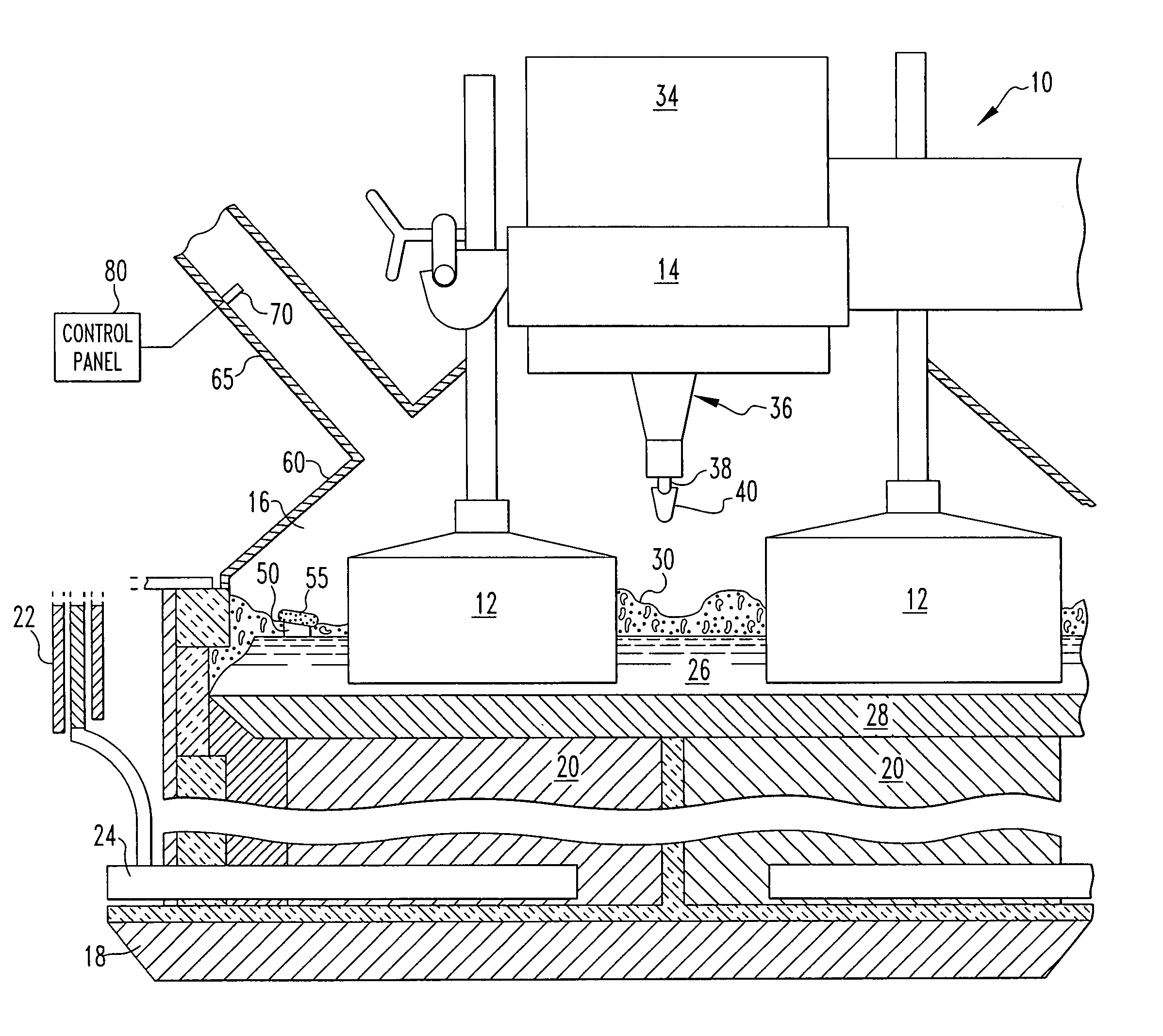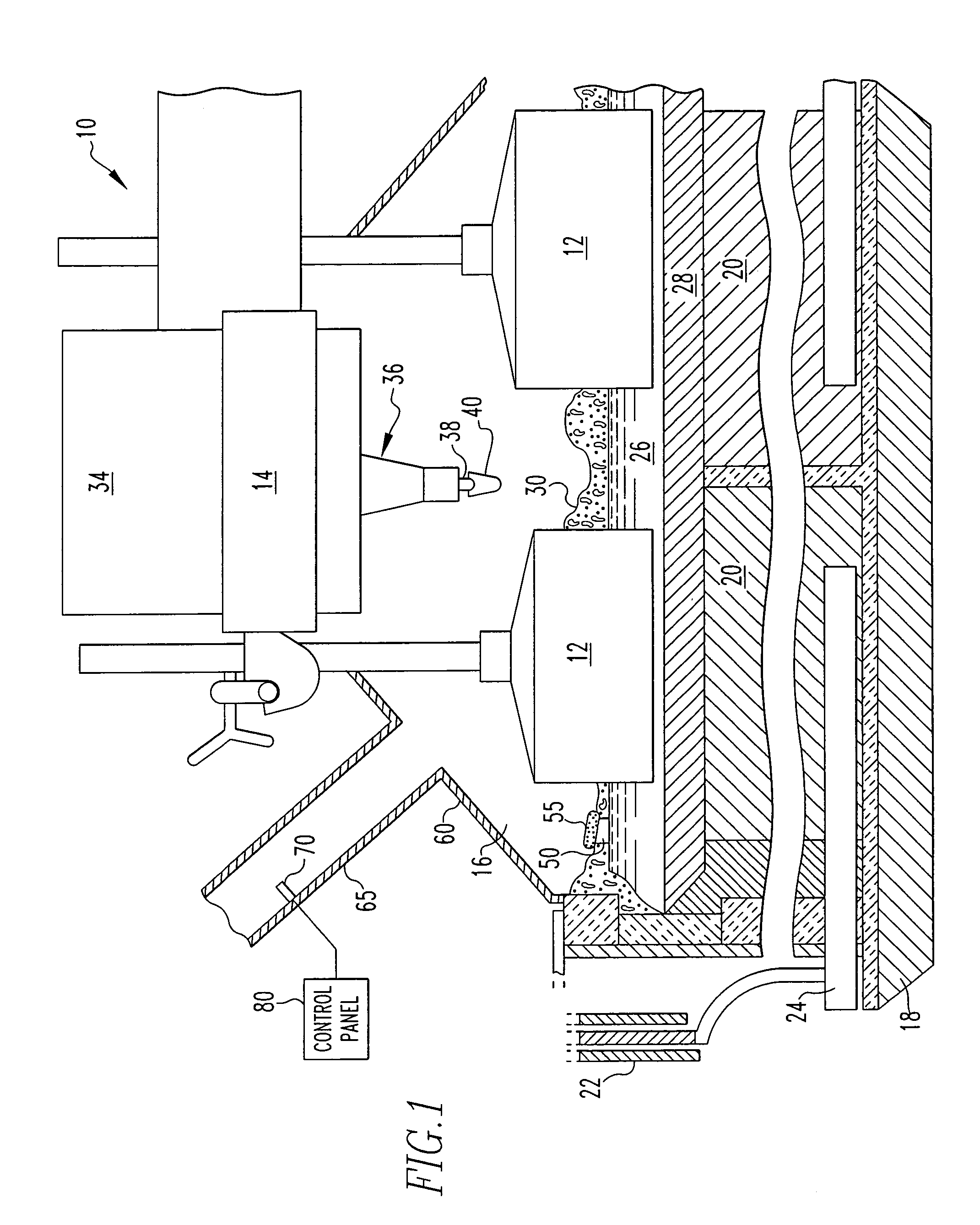Measuring duct offgas temperatures to improve electrolytic cell energy efficiency
a technology of electrolysis cell and temperature measurement, which is applied in the direction of electrolysis components, instruments, optics, etc., can solve the problems of increasing power consumption, and achieve the effect of maintaining the pot heat balance and minimizing the energy requirements of operating an aluminum electrolysis cell
- Summary
- Abstract
- Description
- Claims
- Application Information
AI Technical Summary
Benefits of technology
Problems solved by technology
Method used
Image
Examples
Embodiment Construction
[0020]In FIG. 1 there is shown an electrolytic cell 10 for aluminum production, including carbon anodes 12 suspended by anode rods 13 from a bridge 14. The anodes 12 are situated within a cell chamber 16 lined with a layer of insulating material 18 upon which solid carbon cathode blocks 20 are positioned. The cathode blocks 20 are connected in an electrical circuit with an external bus 22 via steel collector bars 24 passing through the cathode blocks 20.
[0021]A molten cryolite electrolyte 26 containing dissolved alumina is maintained at approximately 950–960° C. within the chamber 16. As electrolytic reduction proceeds, a pad 28 of molten aluminum covers the cathode blocks 20. A layer of solid crust 30 forms above the molten electrolyte 26 surrounding the carbon anodes 12. The crust 30 is generally several inches thick.
[0022]The movable bridge 14 is adjustable vertically to enable the carbon anodes 12 to be elevated or lowered relative to the molten bath 26. An overhead hopper 34 su...
PUM
| Property | Measurement | Unit |
|---|---|---|
| temperature | aaaaa | aaaaa |
| temperature | aaaaa | aaaaa |
| temperature | aaaaa | aaaaa |
Abstract
Description
Claims
Application Information
 Login to View More
Login to View More - R&D
- Intellectual Property
- Life Sciences
- Materials
- Tech Scout
- Unparalleled Data Quality
- Higher Quality Content
- 60% Fewer Hallucinations
Browse by: Latest US Patents, China's latest patents, Technical Efficacy Thesaurus, Application Domain, Technology Topic, Popular Technical Reports.
© 2025 PatSnap. All rights reserved.Legal|Privacy policy|Modern Slavery Act Transparency Statement|Sitemap|About US| Contact US: help@patsnap.com


